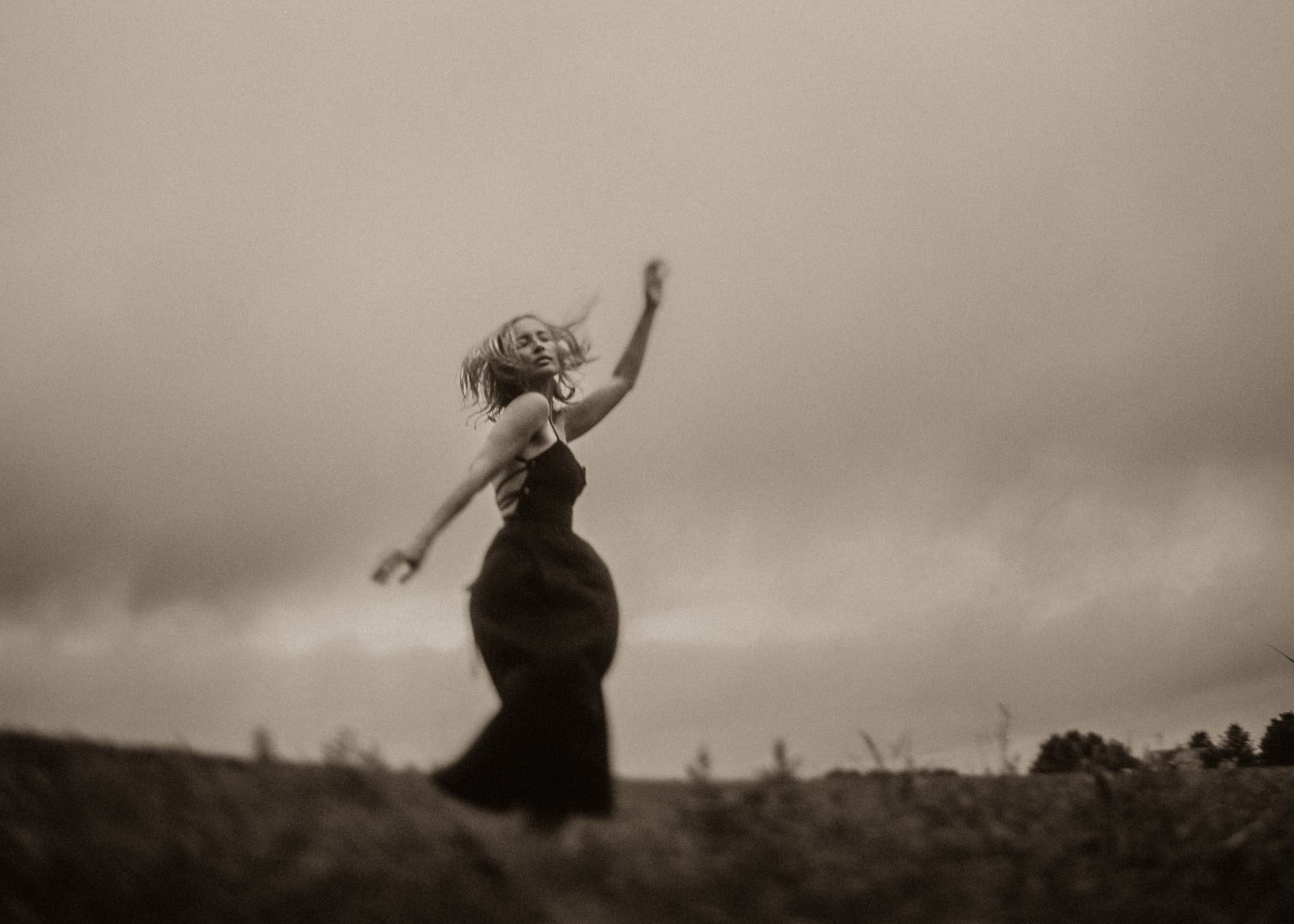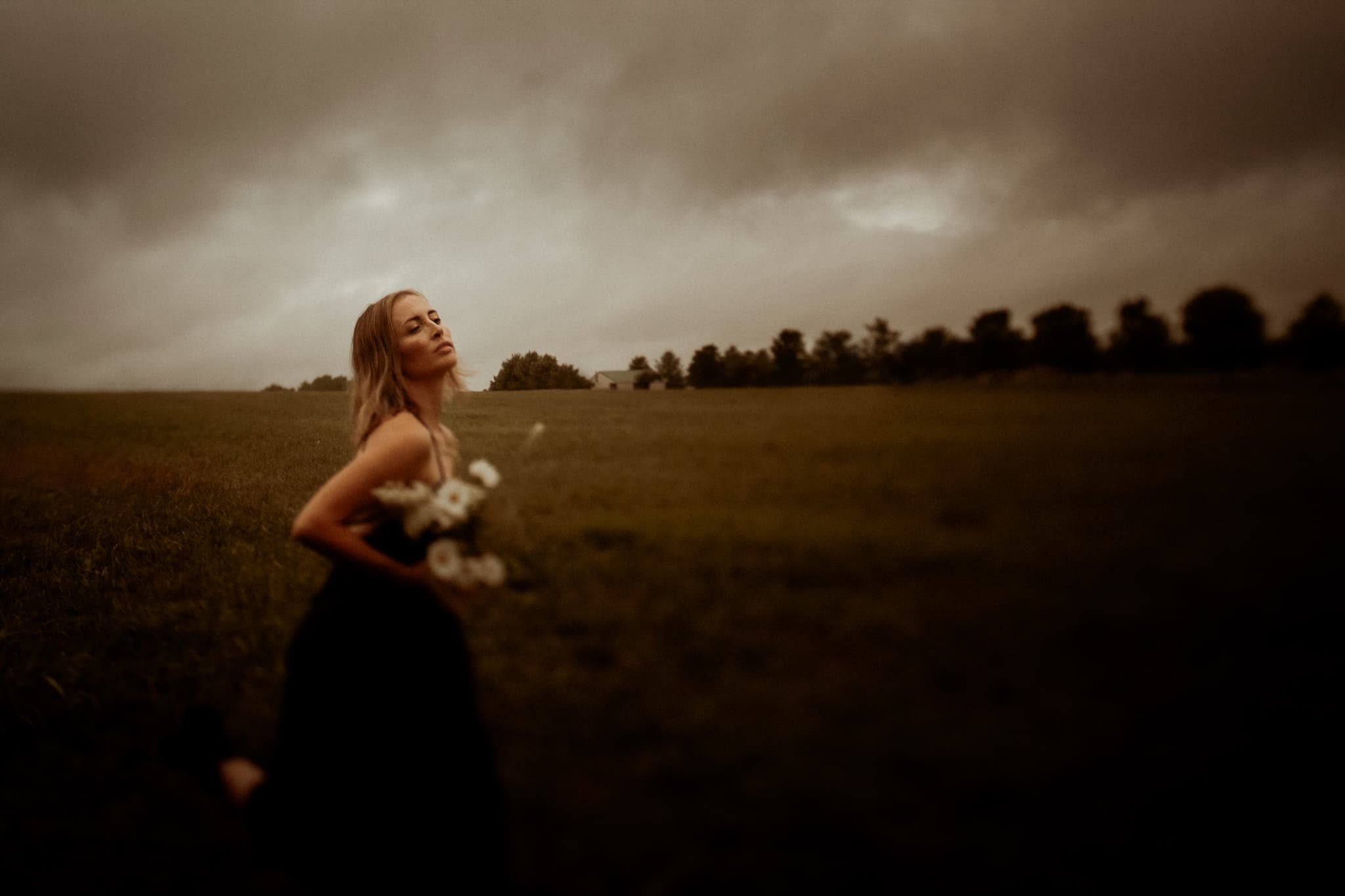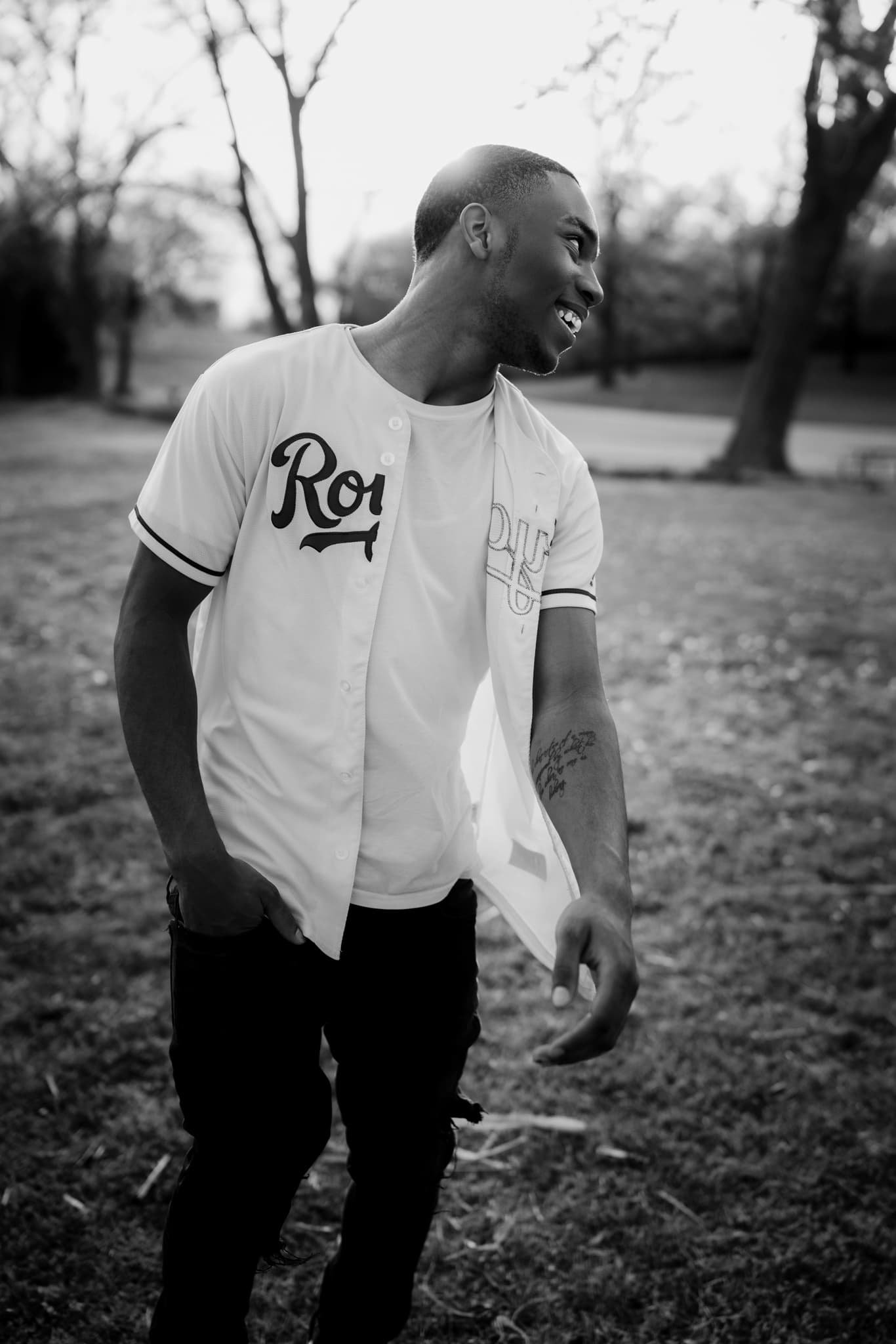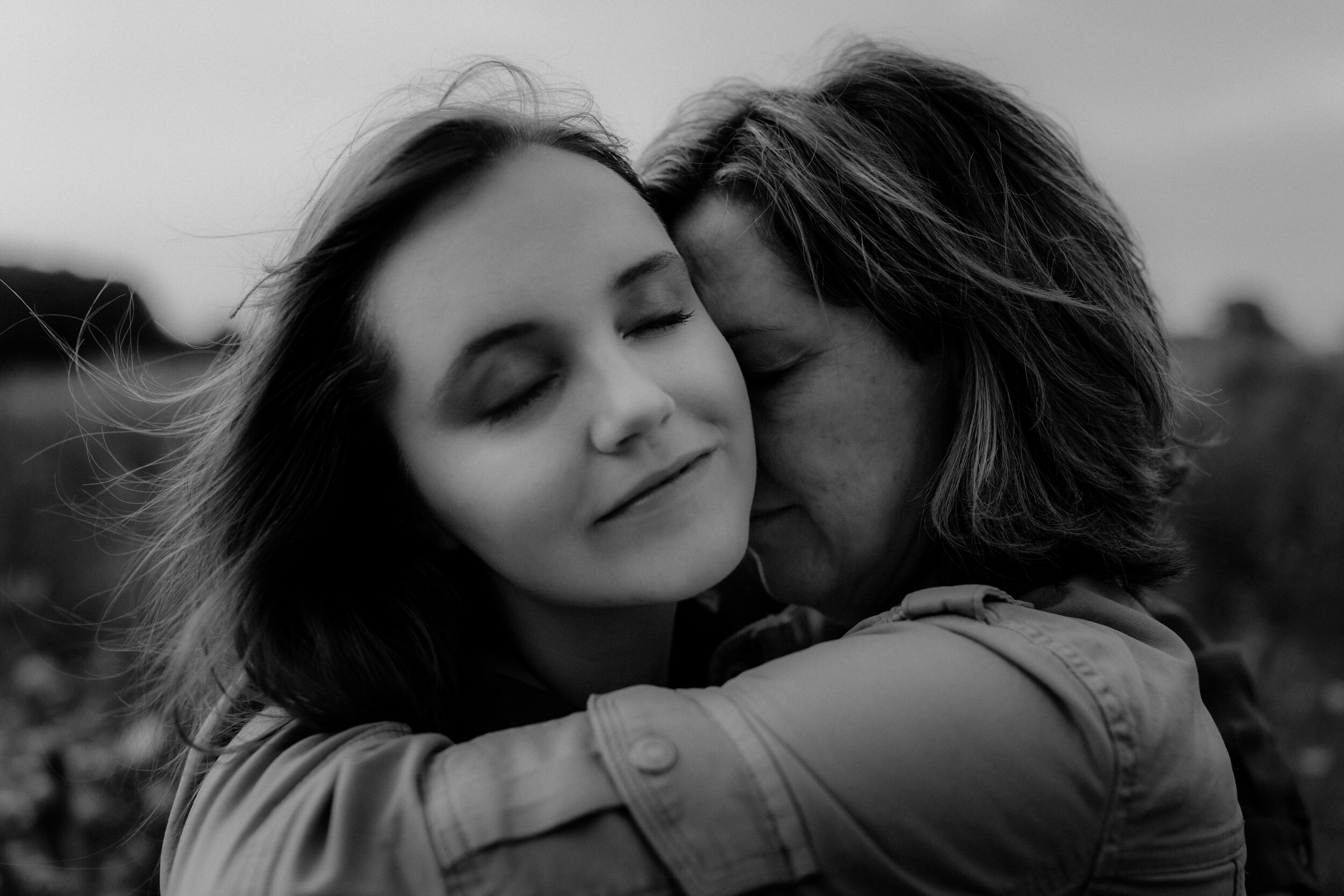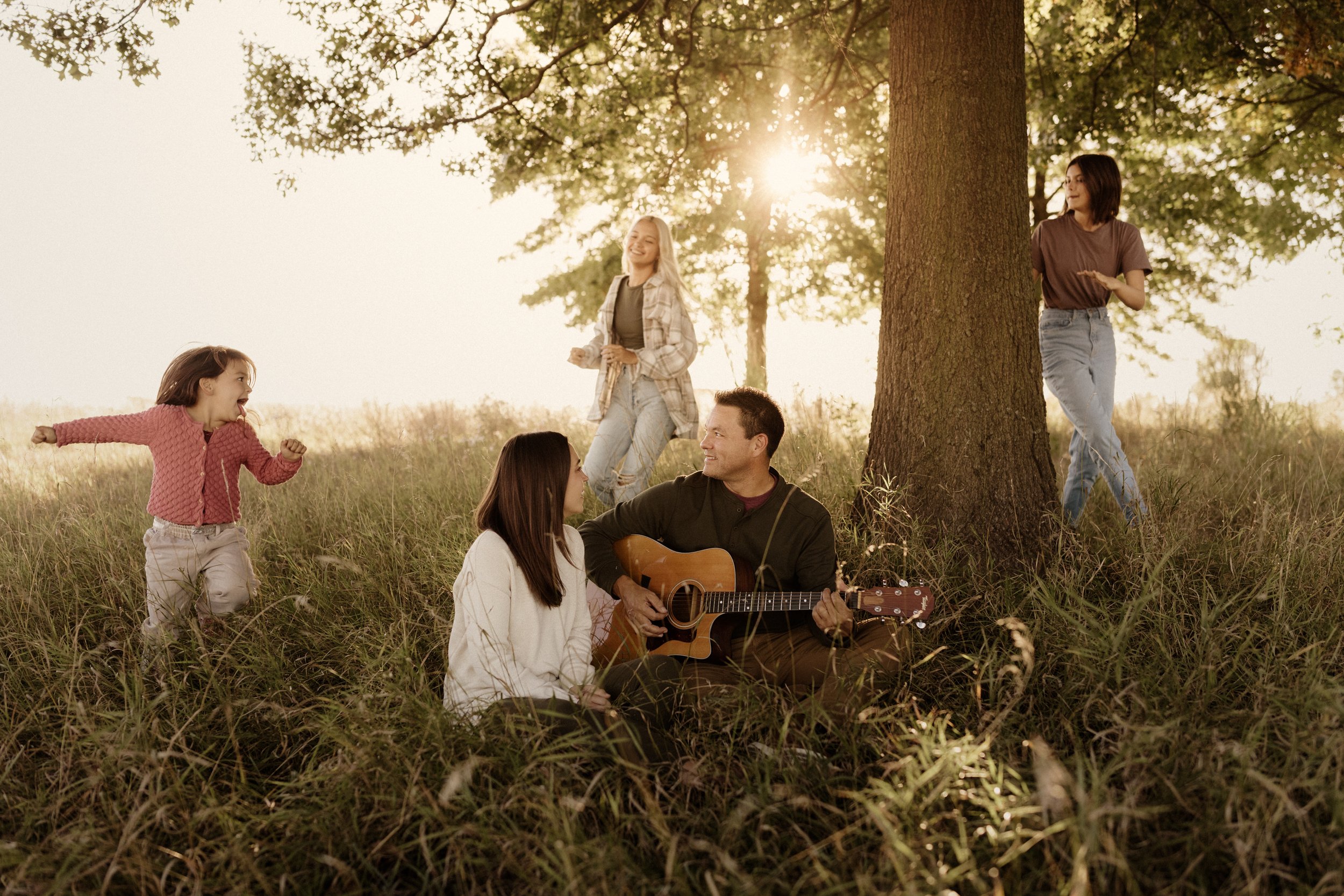Add Visual Interest to Your Photography by Creating Movement in Your Portraits
Play with Photography Techniques Like Motion Blur & Long Exposure
I wasn't big on cartoons when I was a kid. In fact, I pretty much went from being breastfed to peeping Die Hard flicks. My father, however, usually got a pretty good chuckle watching the stupid antics of Looney Tunes' Wile E. Coyote. But I was a Road Runner fan. He was just a long swath of colorful blur when he was moving at a high velocity.
The animated smudge of color illustrated his incredible speed and added visual interest to the show.
Now imagine if the Road Runner was just a dot on the screen without any added effect. He wouldn't have been nearly as dynamic or engaging.
The Benefit of Movement Photography
Applying the Road Runner principle to photography by capturing motion creates energy and intensity in our images. Even if it's just a little motion blur, we want our audience to feel in the moment with us, whether as an active participant or a voyeur.
To do that, we can photograph action images using freeze motion or blurred movement — and any photographer can choose their favorite ways to achieve a style.
But first, let's learn the rules.
The Rule of Space and Why it's Important to a Composition
You must use the Rule of Space to compose an action portrait properly. (Unless you're saying, "Screw the rules." And if so, you do you and make awesome art.)
The Rule of Space is a composition technique that adds distance in front of where your subject is moving, looking, or pointing. The added space implies motion (when the subject moves, they need somewhere to move to) and leads the eye of the viewer in a specific direction. As humans, we glance at the subject's eyes first, then as if there is an invisible leading line, our attention goes in the direction the client is looking.
The Rule of Space helps move the eye around the image and gives the subject "room to move" or "room to look" in the photograph. Used in conjunction with the rules of composition, you can create a very strong photograph.
A photographer will frequently use the Rule of Space and the Rule of Thirds together. Placing your subject on one of the third lines and having them face into the frame gives the main subject the room it needs.
Images with movement tend to be eye-catching; they drag the viewer into the frame and force the eye to glide along with the moving elements. If you want an energetic and intense composition, add some action.
And it's relatively easy to do.
Put Your Clients in Motion
Adding movement to a photo session can be simple. Just direct your portrait clients to move!
Wow! Talk about stating the obvious.
But don't get me wrong, as a photographer, you'll need to be much more specific with your prompts than saying, "Move!" but even adding in an uncomplicated action, such as shifting their head from side to side, can help break the awkward tension that clients sometimes feel when they get in front of a camera.
Create an Active Body, Not a Passive One
In portrait photography, it's best to apply Newton's First Law of Motion: A body in motion tends to stay in motion.
I know. I know. Not what Newton meant. But it applies.
When you get people moving at the beginning of their session, it loosens them up. It helps breaks the ice and sets the tone. It tells your clients, "Hey, we're not just going to stand still and smile at the camera. I want to see some action."
Put Couples to Work
Couples love photographs where they are having fun together. No one wants that awkward standing pose. Here are a few basic prompts:
They can dance, twirl, and dip each other.
Have one partner pick the other partner up from behind.
Have them hold hands and jog (towards the camera, away from it, and alongside it).
Show Seniors How to Move
Even though there is no one else for them to interact with, you can get seniors in on the action.
After you have them walk toward the camera, encourage them to walk backwards too. Ensure that at least one of their hands is active and not directly at their side.
Add a mini-step in a tight spot. If you like the location but there isn't enough room for a full stride, have your subject take one step forward and one step back repeatedly. This will give the illusion of walking.
Ask them to skip, run, jump, and dance. Depending on the personality of the subject, this might take some coaxing. If my client is shy, I usually wait until we're alone if we're in a crowded location.
Let Children be Children
In general, active is the default mode for kids. They love to run and play, so capturing motion in children during their photo session isn't about telling them what to do; it's simply permitting them to be themselves. With all these prompts, please consider the safety of the child. If in doubt, always ask a guardian.
Let them skip stones in the river/lake.
They can jump from stumps and larger rocks.
Ask them to race one another.
Get a Family Flowin'
Getting families mobile is super simple, especially if small children are involved. They never stop moving, and one or more parents chase them. Don't try and fight it. Harness it.
Family members can bump hips while they walk together. (This works well with older children).
Have them play a game of tag in a small area so you can capture it without chasing them.
If it's safe, ask the parents to swing or toss their kids into the air.
Add Movement to the Hair
If you're shooting indoors, plug in a fan or hairdryer to move the hair. Even gentle movement will increase visual interest.
If you're outside, don't be afraid to embrace the wind. Turn the main subject until you get the desired aesthetic. If it's a windless day, but you'd like to incorporate some hair movement, consider investing in an electric leaf blower. Just be careful not to hit your client with its full force. It can be a bit much.
Also, a quick head shake can move the hair in any environment.
Just Say Swish
Unless we're talking about an avant-garde outfit, all clothing textiles are designed to move with the human body. But in terms of movement, for the sake of photography, not all fabric is created equal.
Lightweight fabrics capture the breeze and can hold movement longer than their heavier counterparts, so look for airy fabrics like chiffon, tulle, moss crepe, silk, georgette, or organdy.
To add movement, you can:
Ask your client to dance while they shift around their clothing.
Flutter the dress
Never underestimate the power of a sheer scarf. Wear it, drape it, or send it flying.
You Can Move Too
Your clients shouldn't be the only ones making moves during a photo session. You can add the illusion of movement to any image by intentionally moving your body or camera.
Move your Body
Since we're trying to mimic movement, you'll need to adjust your shutter speed first. You'll want to play with your settings, but remember; we're not trying to freeze action in this case. We're trying to imitate it. You'll want a longer shutter speed. Start at 1/30 and go up or down from there, depending on the desired effect and your lighting situation. (Adjust the aperture and ISO according to the available light).
Once you nail down your camera settings, move with your subjects. If you ask your client to run or jump, run alongside them for a few shots. Neither the background nor your subject will be in focus, but ideally, your client will be sharper than the background, and it's a neat little effect. Don't be afraid to make mistakes. We learn when we experiment.
Pan your Camera
If you are photographing a moving subject, you can attempt panning. To pan correctly, you must adjust your shutter speed and camera settings again. Start around 1/30 and adapt accordingly.
You'll then need to move (or pan) your camera at the same speed the subject is moving. The subject will stay in relative focus, while the background will be a total horizontal blur.
Now, let's reverse the effect.
Keep Your Camera Still
Another way to capture motion is to set your camera up on a tripod and use a long exposure (start with a shutter speed of around 1/50) to blur the subject's movement while keeping the background pristine.
Adjust the shutter speed to match the speed of the subject. Faster subjects will need a slow shutter speed, but slow subjects will require a prolonged one.
When it's time to take your image, you can use a remote if you have one, this will ensure your finger won't move the camera when you press the shutter.
Freeze Action
You'll want to use a very high shutter speed to stop motion in its tracks. I recommend at least 1/1,000, possibly even higher, depending on what it is you're shooting. You'll want to eliminate all blur (unless you set your f-stop at a wide aperture for a shallow depth of field), but ideally, you will have captured your subject extremely engaged and creating an intriguing shape with their body.
If you are shooting sports, you might need to invest in a telephoto lens to tighten the photograph to the subject.
Why Use Motion Blur in Your Photography
Photographers use motion blur to create a sense of movement and action in their photographs. It is particularly effective in scenes with motion, such as sports, dance, or street photography.
You can convey a sense of speed, energy, and dynamism by intentionally blurring parts of the image in motion, making the photograph more compelling and visually compelling.
In addition, you can use motion blur creatively to produce abstract and artistic images with a more surreal or dreamlike quality. Photographers can create emotionally evocative and stunning images by experimenting with different shutter speeds and camera settings.
Overall, motion blur can be a powerful tool if you're looking to add depth and dynamism to your images.

